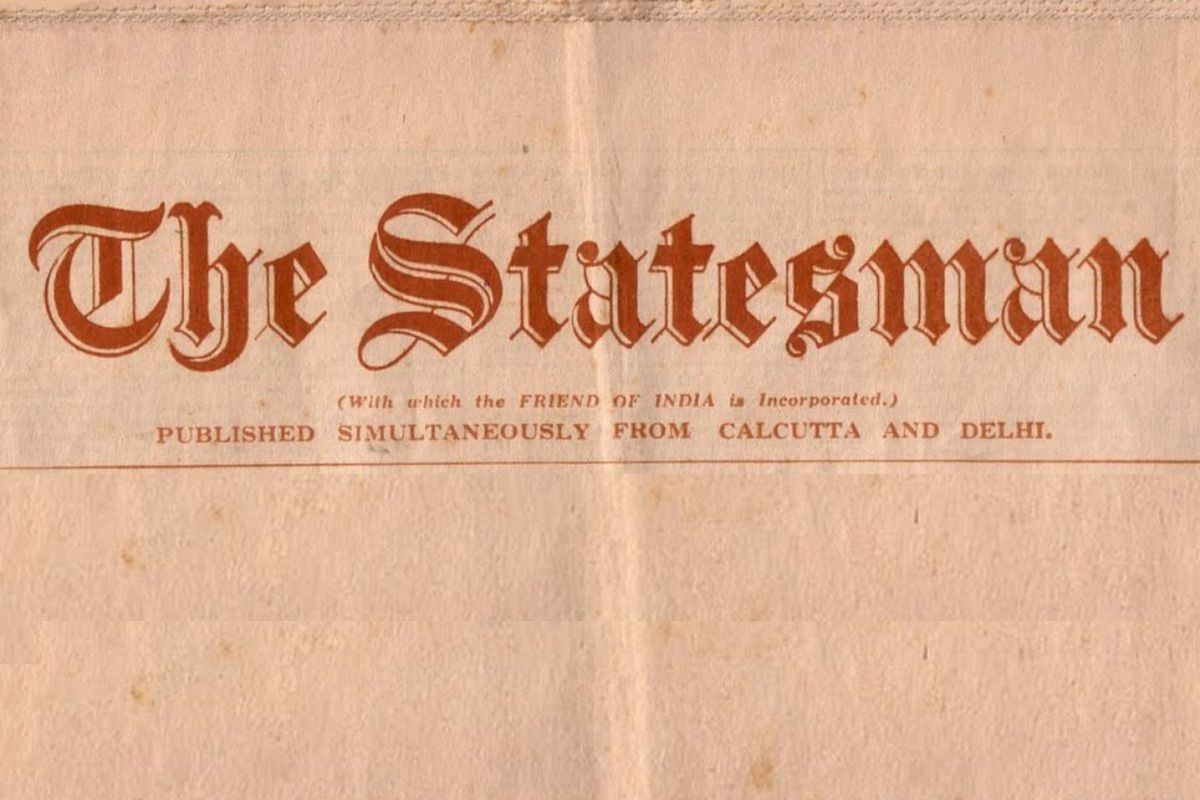A New Day, A New Dawn
There is a surprise for the readers. A special Poila Boishakh gift from none other than West Bengal chief minister Mamata Banerjee. Who has written a piece for this special edition.
On this day a century ago, these were some of the news items The Statesman readers got to read about India and the world.

OCCASIONAL NOTE
It is easy to believe that, if Lord Fisher has made up his mind to let himself “go,” his capacity to administer a series of electric shocks to a public which hardly knows whether to be more pleased or terrified is likely to greatly exceed that of Lord French. The first instalment of his “Memories,” to which Reuter refers in the message published today, fully bears out this probability, and this new sensation promises to eclipse most of those which have gone before. Whether it will enhance the reputation of “Jacky” Fisher is, of course, another story. In the meantime it is interesting to note that, according to this versatile strategist, there was actually a plan in incubation on the part of the British authorities for wiping out the entire population of Heligoland by means of an invention even more diabolical than any which the Germans ever brought into play – a scentless poison gas which would exterminate not merely humans, but every animal on the island as well. This design was obviously naval in its strategic inspiration, and may have been naval also in its details. Presumably the refusal to make use of it was also due to the decision of the Admiralty. It is obvious that not even the advantage of putting Heligoland out of action could have compensated for the stigma of so ferocious an exercise of force majeure, in addition to which it would have been difficult.
THE MISSING DIAMONDS
Advertisement
COLOMBO, OCT 17
It is stated that the arrival of a certain vessel named the Exist may see the solution of the great diamond robbery. Diamonds valued at sixty-five thousand pounds sterling have mysteriously disappeared in transit between London and Ceylon. Messrs. Kino Brothers despatched from London by the Merkera to Colombo registered packets containing the diamonds. The Merkera duly arrived in Bombay but diamonds failed to reach Ceylon. Today a representative of the Times of Ceylon waited on Mr. Norman D. Cross, a member of the firm of Kino Bros., who has been waiting in Colombo for the diamonds and was told that the Acting Postmaster General, Ceylon, had today written to Mr. Cross saying that the parcels of diamonds have been lost in the course of transmission by post. This is the largest consignment of precious stones ever stolen in transit between London and the East.
IN PRAISE OF MADRAS
MADRAS, OCT 17
Sir Devaprasad Sarvadhikari, of Calcutta, who is now here, delivered a lecture yesterday at the Gokhale Hall on “What South India has to Teach.” Sir P. Sivaswami Iyer presided. The lecturer said there was a time when the people of Bengal used to look down upon Madras as the benighted presidency, but Madras could give points to Bengal in quite a catalogue of things. At the present time Madras led the way in public life, in the great principles of jurisprudence and law, and in ever so many things. The matter regarding which the speaker had been particularly impressed in the city of Madras was its educational activities. The speaker referred to the South Indian temples and the great scope that there existed for students of archaeology and history to throw light on the hidden pages of India’s past.
WORLD S COTTON
The World Cotton Conference opened yesterday, thirty-one nations and every branch of the cotton industry being represented. Mr. McColl, Chairman of the National Council of American Cotton Manufacturers, was elected chairman. He said he hoped that an important agreement would be reached in methods which would benefit the whole industry. Mr. Wannamaker, President of the American Cotton Association, said that the cotton acreage in the Americans would not be increased till the price justified cotton-growing by well paid labour, but the yield must be increased.
THE PAST MONSOON
SIMLA, OCT 17
During the monsoon period proper, from June to September, the rainfall over India and Burma as a whole was five per cent in excess of the normal. An unusual feature of the past monsoon was the small number of areas having large defects or excesses of rainfall. Only two regions departed by more than twenty per cent from the normal, namely, Central India with an excess of 37 per cent, and Sind with a defect of 31 per cent. The only regions in which the rainfall was at all in defect were Madras, Assam, the North-West Frontier Province, Hyderabad and Sind. In the first three of these the defect was less than 10 per cent, while the defect in Hyderabad was 17 per cent.
Advertisement